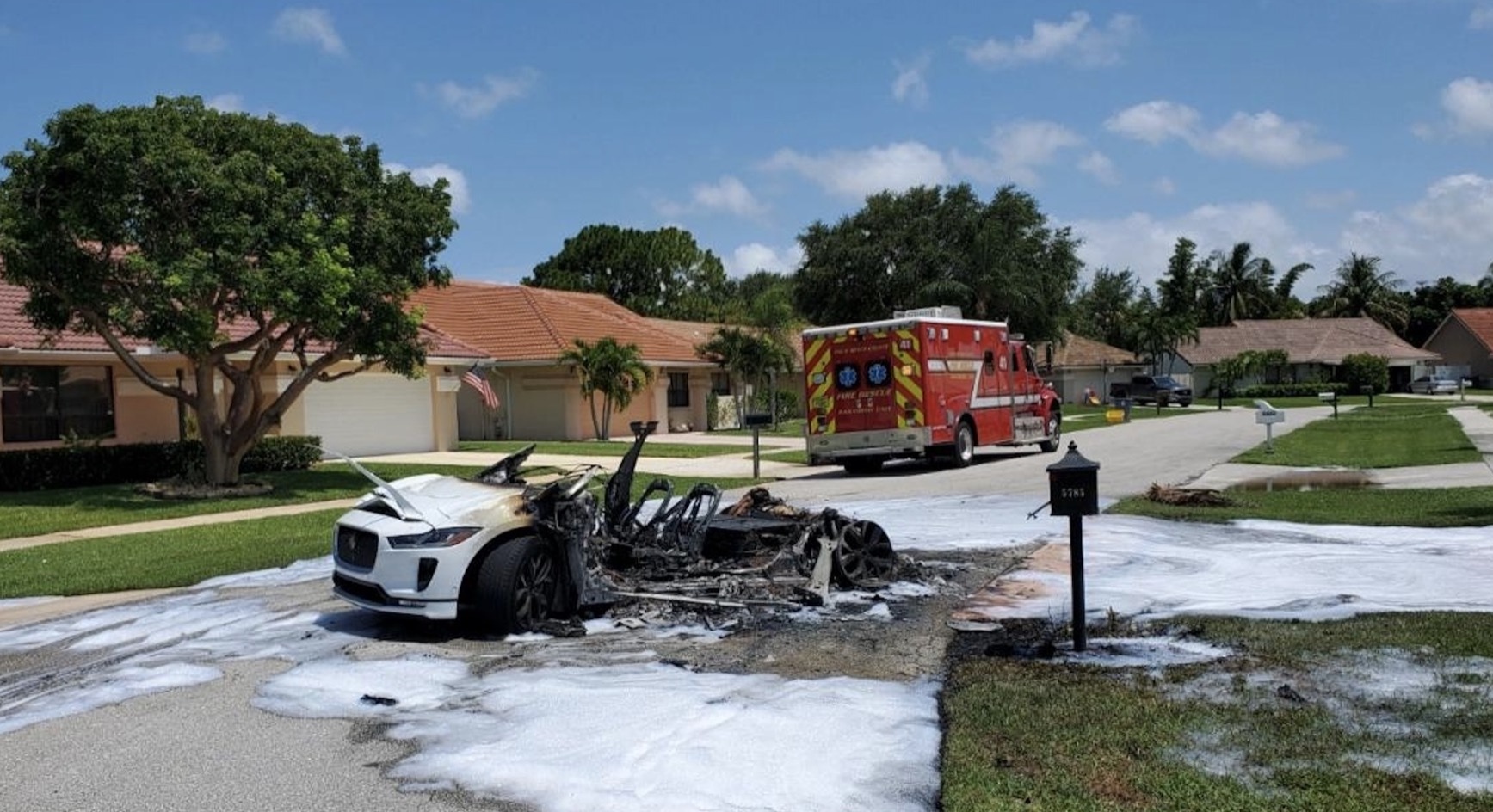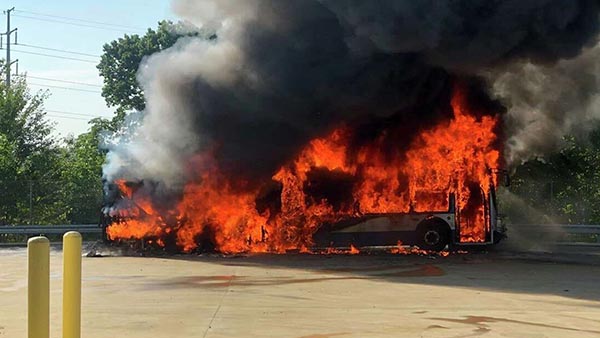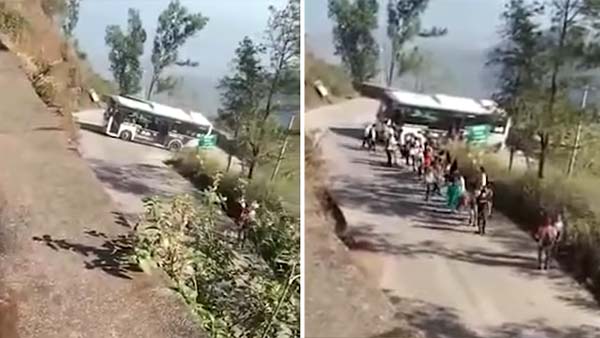You are using an out of date browser. It may not display this or other websites correctly.
You should upgrade or use an alternative browser.
You should upgrade or use an alternative browser.
Electric cars are the next scam far left globalists want to screw you over with!
- Thread starter SheriffJoe
- Start date
"This machine is required to move 500 tons of earth/ore which will be refined into one lithium car battery. It burns 900-1000 gallons of fuel in a 12 hour shift.
Lithium is refined from ore using sulfuric acid. The proposed lithium mine at Thacker Pass is estimated to require up to 75 semi loads of sulfuric acid a day! The acid does not turn into unicorn food like AOC believes.
A battery in an electric car, lets say an average Tesla, is made of 25 pounds of lithium, 60 pounds of nickel, 44 pounds of manganese, 30 pounds of cobalt, 200 pounds of copper, and 400 pounds of aluminum, steel, and plastic, etc...averaging 750-1,000 pounds
of minerals, that had to be mined and processed into a battery that merely stores electricity..... Electricity which is generated by oil, gas, coal, nuclear, or water (and a tiny fraction of wind and solar)....
That is the truth, about the lie, of "green" energy.
There’s nothing green about the green new deal. You people better learn how to vote or this nonsense will continue to flow down on top of you from the throne of government you put these people on."

Lithium is refined from ore using sulfuric acid. The proposed lithium mine at Thacker Pass is estimated to require up to 75 semi loads of sulfuric acid a day! The acid does not turn into unicorn food like AOC believes.
A battery in an electric car, lets say an average Tesla, is made of 25 pounds of lithium, 60 pounds of nickel, 44 pounds of manganese, 30 pounds of cobalt, 200 pounds of copper, and 400 pounds of aluminum, steel, and plastic, etc...averaging 750-1,000 pounds
of minerals, that had to be mined and processed into a battery that merely stores electricity..... Electricity which is generated by oil, gas, coal, nuclear, or water (and a tiny fraction of wind and solar)....
That is the truth, about the lie, of "green" energy.
There’s nothing green about the green new deal. You people better learn how to vote or this nonsense will continue to flow down on top of you from the throne of government you put these people on."
Now THIS is funny
Who brought the marshmallows

 economictimes.indiatimes.com
economictimes.indiatimes.com

Who brought the marshmallows

Jaguar I-Pace electric car reduced to ashes after battery fire in US
According to Electrek, Jaguar uses LG battery cells like the Bolt EV and Kona EV, which were both recalled for battery fire risks recently. The latest battery fire was reported by Jaguar I-Pace owner Gonzalo Salazar in the state of Florida.

Charles Payne broke down how EV manufacturers will have to rape the planet to enact their proposed EV goals. And of course it's mostly 2nd/3rd world countries like Congo, Indonesia, and Chile that will have their water poisoned and ecology devastated to mine lithium, cobalt, manganese, nickel, etc
and don't forget that gas and diesel are massive revenue generators for the state and federal government through taxes per gallon. Avg is $0.50/gallon for gas, $0.57/gallon for diesel and you really think they'll just kiss this money goodbye because you're not buying gas anymore with your EV? hell no! they'll either determine a cost-per-mile tracked through your EV's GPS system or mandate more toll roads while increasing the cost of the current toll roads. Additionally they'll enact a usage tax on charging stations likely charging you more for the speed of the charge and will impose an annual EV user fee.

Electric cars - the biggest scam the world has ever seen?
Has anyone ever thought about this?
"If all cars were electric...
And if we were stuck in a three hour traffic jam in the cold of a blizzard, the batteries would completely die.
Because electric cars basically don’t have heating.
And being stuck on the street all night, no battery, no heating, no wipers, no radio, no GPS, the battery is long dead.
You can try to call ambulance and protect women and children but they can't come to help because all roads are closed and probably all police cars will be electric.
And when the roads are blocked by thousands of loaded cars, no one will be able to proceed. How to charge batteries on site?
The same problem during the summer vacation is the traffic jams for kilometers.
The possibility of turning on the air conditioning in an electric car would not be available only for a short period of time. Your batteries would die in an instant!
Of course, no politician or journalist talks about it, but this will happen.
This is a Lithium leach field. This is what your Electric Car batteries are made of. It is so neuro-toxic that a bird landing on this stuff dies in minutes. Take a guess what it does to your nervous system? Pat yourself on the back for saving the environment.

Lithium extraction fields in South America have been captured by an aerial photographer in stunning high definition.
But while the images may be breathtaking to look at, they represent the dark side of our swiftly electrifying world.
Lithium represents a route out of our reliance on fossil fuel production. As the lightest known metal on the planet, it is now widely used in electric devices from mobile phones and laptops, to cars and aircraft.
Lithium-ion batteries are most famous for powering electric vehicles, which are set to account for up to 60 per cent of new car sales by 2030. The battery of a Tesla Model S, for example, uses around 12 kg of lithium.
These batteries are the key to lightweight, rechargeable power. As it stands, demand for lithium is unprecedented and many say it is crucial in order to transition to renewables.
However, this doesn't come without a cost - mining the chemical element can be harmful to the environment.
German aerial photographer Tom Hegen specialises in documenting the traces we leave on the earth's surface. His work provides an overview of places where we extract, refine and consume resources with his latest series exposing the “Lithium Triangle.”
“Since a lot of my work deals with the extraction, processing and use of resources, I got interested in what the transition of the mobility sector towards electromobility looked like,” he begins.
“Lithium is one of the key components of building (car) batteries and I wanted to photograph the worldwide biggest examples of lithium evaporation sites in the lithium triangle of Chile, Bolivia and Argentina.”
So how did he do it?
“To get the enormous mining operations in the frame, I chartered a small aeroplane and flew high above them,” Hegen explains.
Lithium extraction fields in South America have been captured by an aerial photographer in stunning high definition.
But while the images may be breathtaking to look at, they represent the dark side of our swiftly electrifying world.
Lithium represents a route out of our reliance on fossil fuel production. As the lightest known metal on the planet, it is now widely used in electric devices from mobile phones and laptops, to cars and aircraft.
Lithium-ion batteries are most famous for powering electric vehicles, which are set to account for up to 60 per cent of new car sales by 2030. The battery of a Tesla Model S, for example, uses around 12 kg of lithium.
These batteries are the key to lightweight, rechargeable power. As it stands, demand for lithium is unprecedented and many say it is crucial in order to transition to renewables.
However, this doesn't come without a cost - mining the chemical element can be harmful to the environment.
German aerial photographer Tom Hegen specialises in documenting the traces we leave on the earth's surface. His work provides an overview of places where we extract, refine and consume resources with his latest series exposing the “Lithium Triangle.”
This region rich with natural deposits can be found where the borders of Chile, Argentina and Bolivia meet. And roughly a quarter is stored in the Salar de Atacama salt flats in northern Chile.Lithium represents a route out of our reliance on fossil fuels - it is most famous for powering electric vehicles.
“Since a lot of my work deals with the extraction, processing and use of resources, I got interested in what the transition of the mobility sector towards electromobility looked like,” he begins.
“Lithium is one of the key components of building (car) batteries and I wanted to photograph the worldwide biggest examples of lithium evaporation sites in the lithium triangle of Chile, Bolivia and Argentina.”
So how did he do it?
“To get the enormous mining operations in the frame, I chartered a small aeroplane and flew high above them,” Hegen explains.








